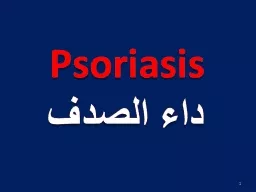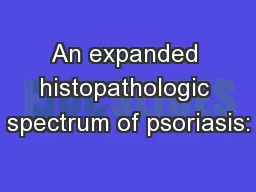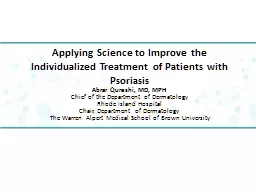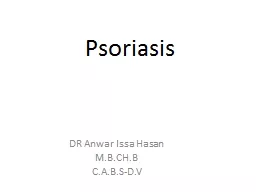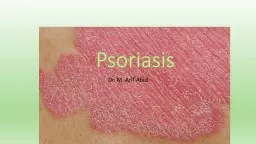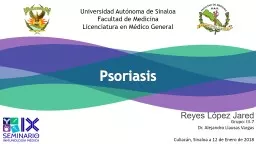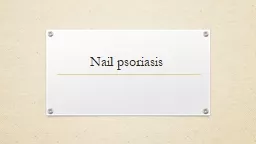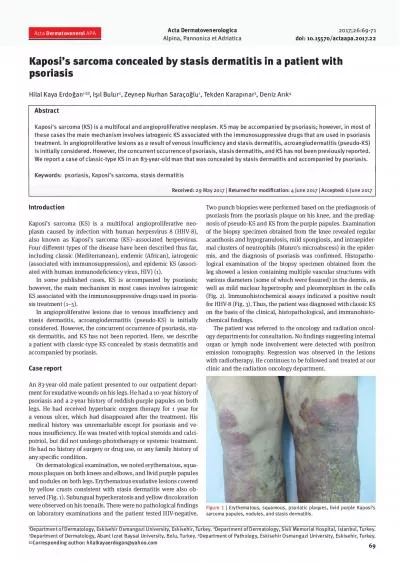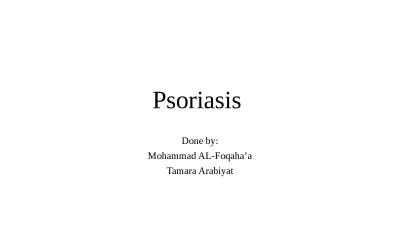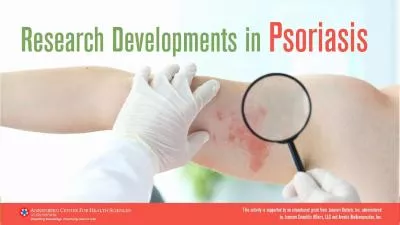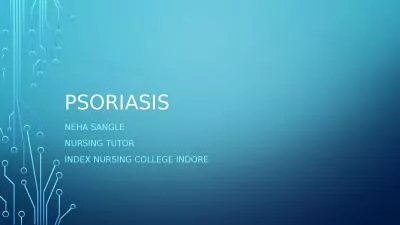PPT-An expanded histopathologic spectrum of psoriasis: review of 51 clinically confirmed
Author : ellena-manuel | Published Date : 2019-11-03
An expanded histopathologic spectrum of psoriasis review of 51 clinically confirmed cases Thinh Chau Kory K Parsi Toru Ogawa Maija Kiuru Thomas Konia Maxwell A
Presentation Embed Code
Download Presentation
Download Presentation The PPT/PDF document "An expanded histopathologic spectrum of ..." is the property of its rightful owner. Permission is granted to download and print the materials on this website for personal, non-commercial use only, and to display it on your personal computer provided you do not modify the materials and that you retain all copyright notices contained in the materials. By downloading content from our website, you accept the terms of this agreement.
An expanded histopathologic spectrum of psoriasis: review of 51 clinically confirmed: Transcript
Download Rules Of Document
"An expanded histopathologic spectrum of psoriasis: review of 51 clinically confirmed"The content belongs to its owner. You may download and print it for personal use, without modification, and keep all copyright notices. By downloading, you agree to these terms.
Related Documents



